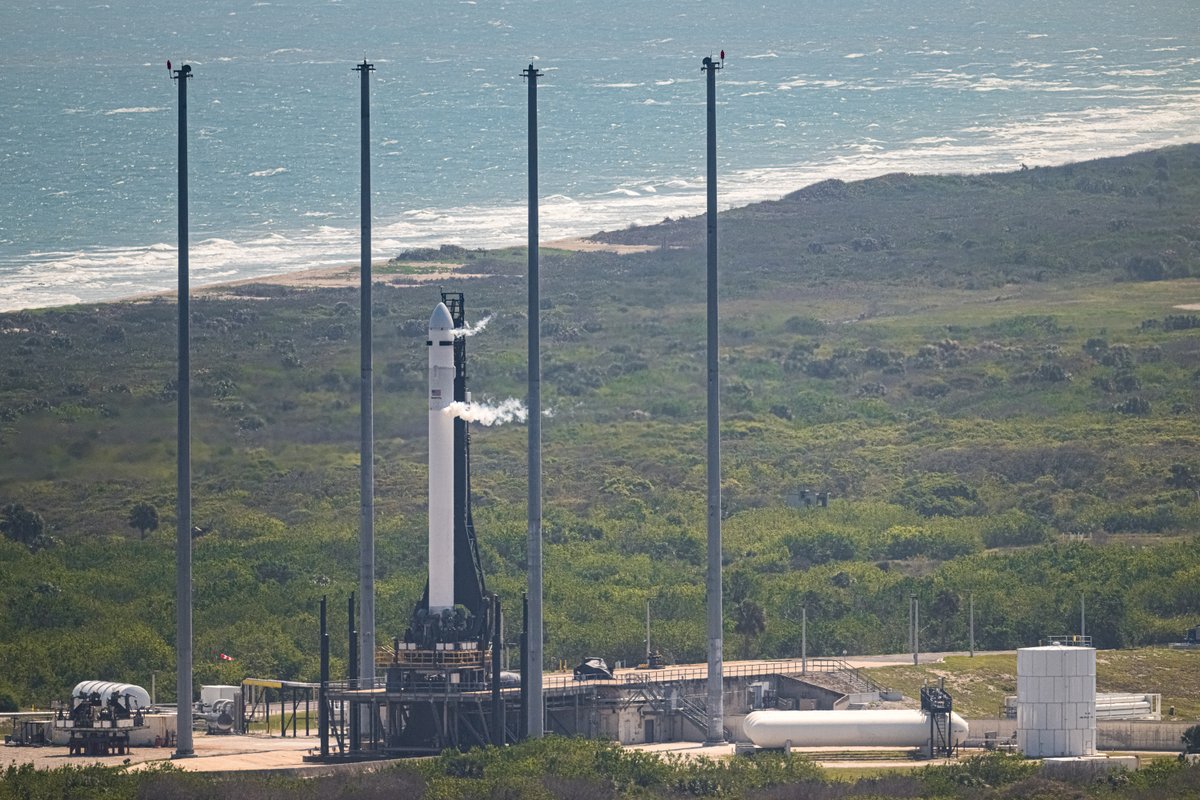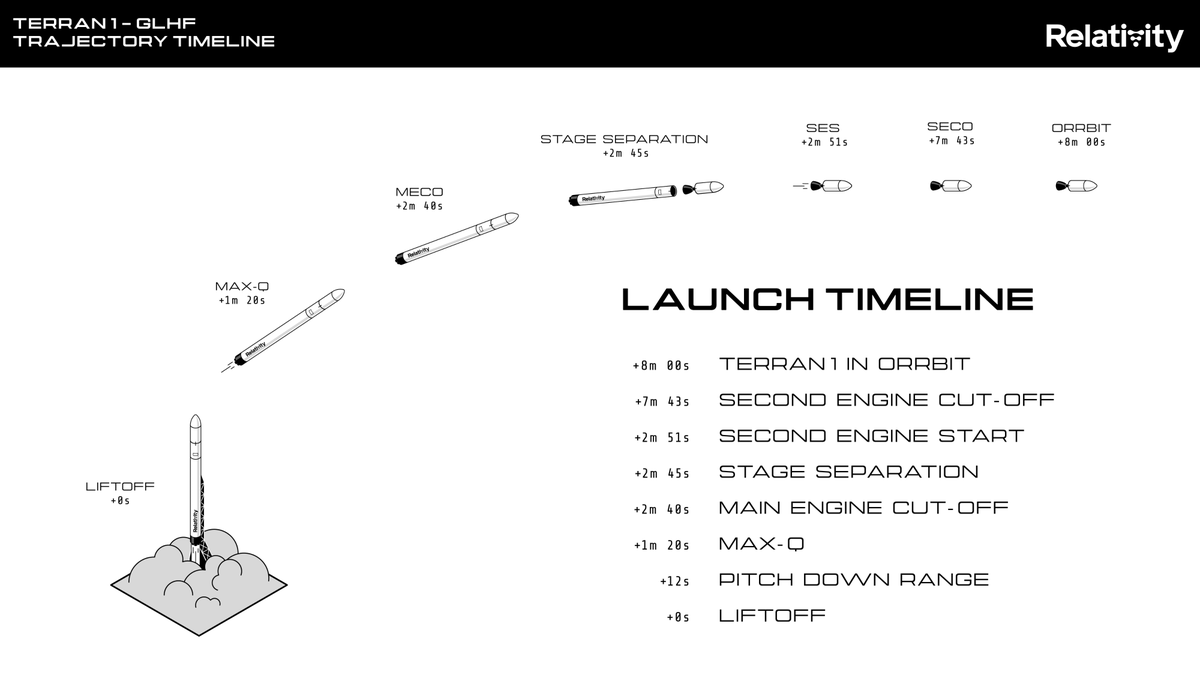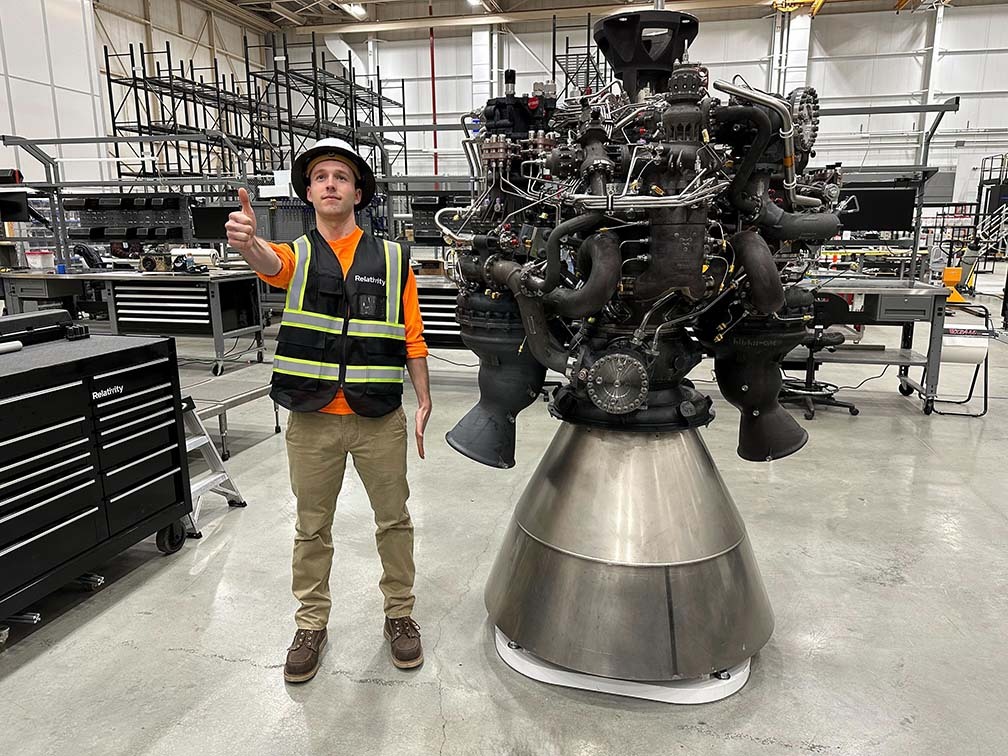Launching the world’s first 3D printed rocket was not going to be so easy. So, when Relativity Space announced that it’s 85% additively manufactured Terran 1 launch vehicle was ready for takeoff on Saturday, March 8, 2023, it marked the beginning of an entirely new era for the industry, both space and 3D printing. However, the company scrubbed its first and second launch attempts, and a new date has not yet been announced.
Although a bit disappointing, this comes as no surprise, especially since, in the past 30 years of missions lifting off from the Kennedy Space Center or Cape Canaveral Air Force Station, 48 percent of scrubs were due to bad weather conditions alone. For many rockets, the “no-go” decision also arises from technical issues that interfere with the launch, such as in central propulsion systems. This was the case for Terran 1.
After seven years in the making, Relativity’s highly anticipated first orbital blast-off out of Launch Complex 16 (LC-16) in Cape Canaveral, Florida, failed. After a few hours of standing at the launch pad, the team decided Terran 1’s takeoff would be scrubbed. The company quickly announced that a second attempt was scheduled for March 11. Relativity was once again “player ready” and had another three-hour launch window, but then weather concerns and a subsequent issue with stage separation left the rocket in limbo. The company has yet to announce a new launch date and window.
One of the most important takeoffs from the mission, nicknamed “Good Luck, Have Fun” (GLHF), was that it proved the vehicle was “healthy” and ready for its next attempt. A quick breakdown of the reasons for Relativity Space’s abort decisions during terminal counts includes issues with the temperature of the propellants on the rocket’s second stage, fuel pressure also on stage two, and stage separation automation.
Space launch failures
Former NASA Research Scientist Creon Levit once said, “it is better to delay a launch than to risk an aborted launch (emergency shut down), or worse, risk an accident.”
Although many are looking at Relativity’s rocket success to pinpoint whether 3D printed rockets can go to orbit, the truth is that plenty of takeoffs have been scrubbed. For example, in October 2020, back-to-back last-second launch scrubs by two SpaceX Falcon 9 rockets 36 hours apart led Elon Musk to undertake a “broad review” of launch operations in Florida to increase its launch rate. Then in 2021, Boeing’s second attempt at an uncrewed test flight of its new Starliner capsule to the International Space Station (ISS) was scrubbed due to an “unexpected valve” problem. And last year’s uncrewed Artemis 1 launch was postponed twice due to a liquid hydrogen leak. Indeed, the list goes on and on.
A study by the Aerospace Corporation published in 2000 found that 91% of known launch vehicle failures in the last two decades can be attributed to three causes: engine, avionics, and stage separation failures. Although failures attract plenty of public attention, they have been an undeniable fact since the space age began in 1957, and notably, lessons learned from scrubbed launches have helped steer the future of space vehicles.
According to the study, available launch-failure data revealed many patterns in the possible causes of failure, which often fell into the category of human error, defective parts, and insufficient prelaunch checkouts. With this in mind, companies like SpaceX have incorporated key engine, avionics, and staging reliability features, including the system-level vehicle management software and health monitoring systems that ensure the rocket is ready for takeoff. Otherwise, it will trigger a scrub.
Like plenty of companies in the space industry, world-famous rocket maker SpaceX has also turned to 3D printing for developing parts and components that go into its rockets, ensuring there is less human error in the manufacturing stages. Although there is no official information on how much of SpaceX’s rockets are 3D printed, we know that AM manufacturer Velo3D is a strategic partner to SpaceX, which was once rumored to become Velo3D’s parent company.
Much like its forerunner, Relativity (whose co-founder Jordan Noone worked for SpaceX as a propulsion engineer) has gone beyond the boundaries of 3D printing parts to create a one-of-a-kind machine capable of producing almost the entire rocket in-house. Under the premise that this new approach will build orbital-class rockets much faster than traditional methods and require thousands fewer parts. This uniqueness has led many to wonder whether the company was in its own category, spearheading both space technologies and 3D printing developments simultaneously.
Building rockets
With the recent announcement of a back-to-back scrubbed first mission attempt, it would appear that the technical issues are entirely unrelated to the “3D printedness” of the rocket. However, time (and data) will tell whether the failures are connected to the innovative new way the vehicle is built. After all, Relativity is not just attempting to send the first AM rocket to orbit but has also chosen to power Terran 1 with liquid methane and liquid oxygen (or methalox) as fuel, also making it the first US orbital rocket aiming to reach orbit on such a mix. For comparison purposes, we should recall that just three months ago, Beijing-based company Landspace tried to launch the world’s first methane-fueled rocket but failed to reach its goal. Unfortunately, the Zhuque-2 launcher, which lifted off on December 14, could not reach its orbital mark.
Newness often brings more scrutiny to the table. Just think about Musk’s car company. Tesla is usually under the microscope, and the stakes are higher for its electric vehicles than for any others. There have indeed been plenty of complaints, and specific models have been recalled, such as several 2016-2023 Model S and Model X vehicles. However, comparing Tesla to other legacy automakers might not be the way to go. Can the same be said about Relativity Space’s rockets? Perhaps it’s too early to tell, and the company has yet to put its 3D printed flagship vehicle in orbit. But once (and if) that box is checked, who is to say that Relativity won’t thrive and pave the way for the 3D printing space economy of the future?
Subscribe to Our Email Newsletter
Stay up-to-date on all the latest news from the 3D printing industry and receive information and offers from third party vendors.
Print Services
Upload your 3D Models and get them printed quickly and efficiently.
You May Also Like
3D Printing News Briefs, June 4, 2025: Full-Color Slicer, Denture Implants, & More
In today’s 3D Printing News Briefs, we’ll start with some software and post-processing news, and then move on to a case report in which digital dentistry was successfully used. Read...
Croom Medical Launches TALOS Technology Platform for 3D Printed Tantalum
Irish company Croom Medical, specializing in precision manufacturing for orthopedic implants, has officially launched the TALOS technology platform for 3D printed tantalum (Ta) components. The platform was developed in collaboration...
CEAD and Damen Partnering to Develop HDPE 3D Printed Workboat
Dutch 3D printing firm CEAD partnered with Damen Compact Crafts (DCCr), part of the Damen Shipyards Group, to develop a 3D printed HDPE workboat. CEAD makes gantry and robot arm-based...
3D Printing News Briefs, May 21, 2025: Medical Training Models, Connectors, Makerspace, & More
We’re starting with research and medical in today’s 3D Printing News Briefs, as a research team from Caltech is using sound to 3D print deep inside living tissue, and rural...




































